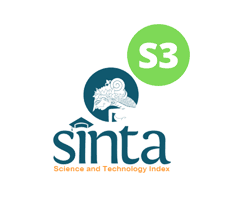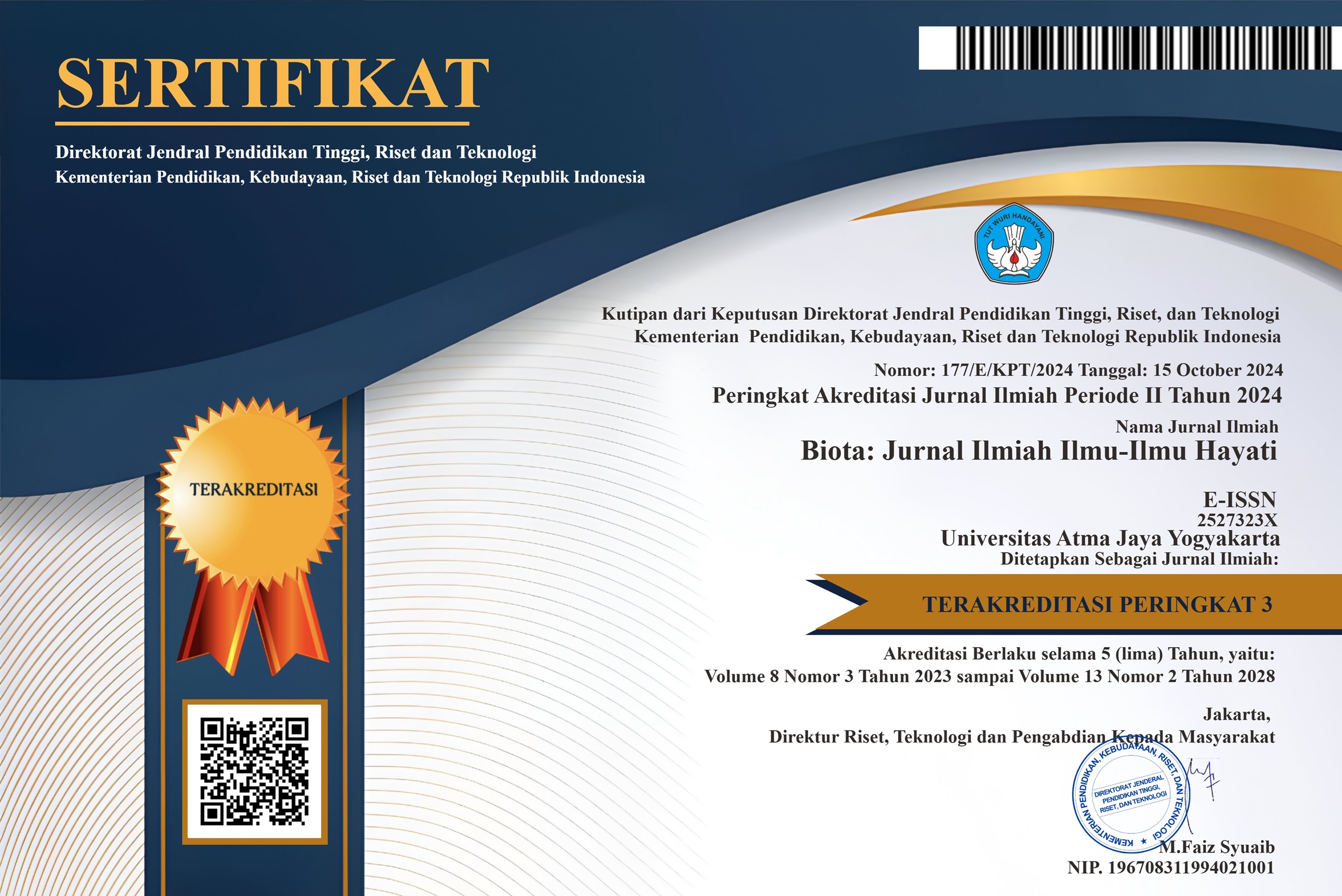Kandungan Protein dan Isoflavon pada Kedelai dan Kecambah Kedelai
DOI:
https://doi.org/10.24002/biota.v15i2.2696Keywords:
Soy protein, soy germ protein, daidzein, glisitein, genisteinAbstract
The research was conducted to explore protein and isoflavone content on soy non germed and soy germed. Soybean “slamet” was rinsed, dipped over night, drained, put in a moist room, and water sprinkled once in a while until germed. The husk of soy and soy germ were removed, and then the soy and soy germ were extracted by NaCl physiologic to become slurry. The slurry pH was arranged to 5.0, centrifugated at 10.000 rpm, and the precipitation was dryed in 70oC to obtain the soy protein and the soy germ protein flour. The levels of protein and isoflavone flour were determined. The result showed that protein content of soy was 36.5%, while protein of soy germ was 42%. The isoflavone of soy protein was 26.7 ppm, consisting of 11.5 ppm genistein, 10.2 ppm daidzein and 5 ppm glicitein, but the soy germ protein was 39.1 ppm, consisting of 14.6 ppm genistein, 16.9 ppm daidzein and 7.6 ppm glicitein. The conclusion is that germed process could increase protein and isoflavone content. The soy protein isoflavone was dominated by genistein and daidzein, while soy germ protein isoflavone was dominated by daidzein and glicitein.Downloads
Published
23-10-2019
How to Cite
Winarsi, H., Purwanto, A., & Dwiyanti, H. (2019). Kandungan Protein dan Isoflavon pada Kedelai dan Kecambah Kedelai. Biota : Jurnal Ilmiah Ilmu-Ilmu Hayati, 15(2), 181–187. https://doi.org/10.24002/biota.v15i2.2696
Issue
Section
Articles
License
Authors who publish with Biota : Jurnal Ilmiah Ilmu-Ilmu Hayati agree to the following terms:
- Authors retain copyright and grant the Biota : Jurnal Ilmiah Ilmu-Ilmu Hayati right of first publication. Licensed under a Creative Commons Attribution-NonCommercial 4.0 International License that allows others to share the work with an acknowledgment of the work's authorship and initial publication in this journal.
- Authors are able to enter into separate, additional contractual arrangements for the non-exclusive distribution of the journal's published version of the work (e.g., post it to an institutional repository or publish it in a book), with an acknowledgment of its initial publication in Biota : Jurnal Ilmiah Ilmu-Ilmu Hayati, and as long as Author is not used for commercial purposes.












